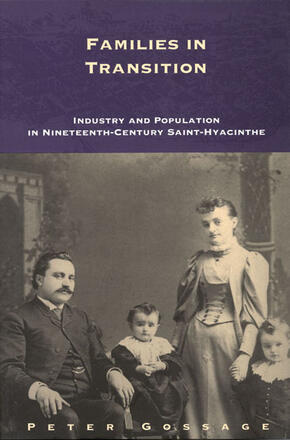
Families in Transition
Industry and Population in Nineteenth-Century Saint-Hyacinthe
La description
Gossage uses a family-reconstitution method, drawing on local parish registers and manuscript-census schedules, to focus on marriage, household organization, and family size in this context of social and economic change. Family formation was profoundly affected as couples adjusted to the new urban, industrial setting. Gossage demonstrates that demographic behaviour was increasingly differentiated by social class, with distinct marriage and fertility patterns emerging among bourgeois and proletarian families. Bourgeois women who married in the 1860s, for example, were already limiting family size, a crucial shift that did not occur in working-class families until almost a generation later. Families in Transition demonstrates the extent to which stereotypes about family life in Quebec before the Quiet Revolution need to be revisited. Far from being passive, static, uniformly prolific, and constrained by religious and cultural perspectives, Saint-Hyacinthe families responded quickly to the changing realities of the day, reinventing marriage patterns and domestic arrangements to fit the new industrial capitalism of the nineteenth century. In this sense they were truly families in transition.
Reviews
"Very few prior to [Gossage] have studied the small urban centres which typified the industrialization process in Quebec outside Montreal . ..the author has been meticulous in his research and interpretation of data. " Jack Little, Department of History, Simon Fraser University.